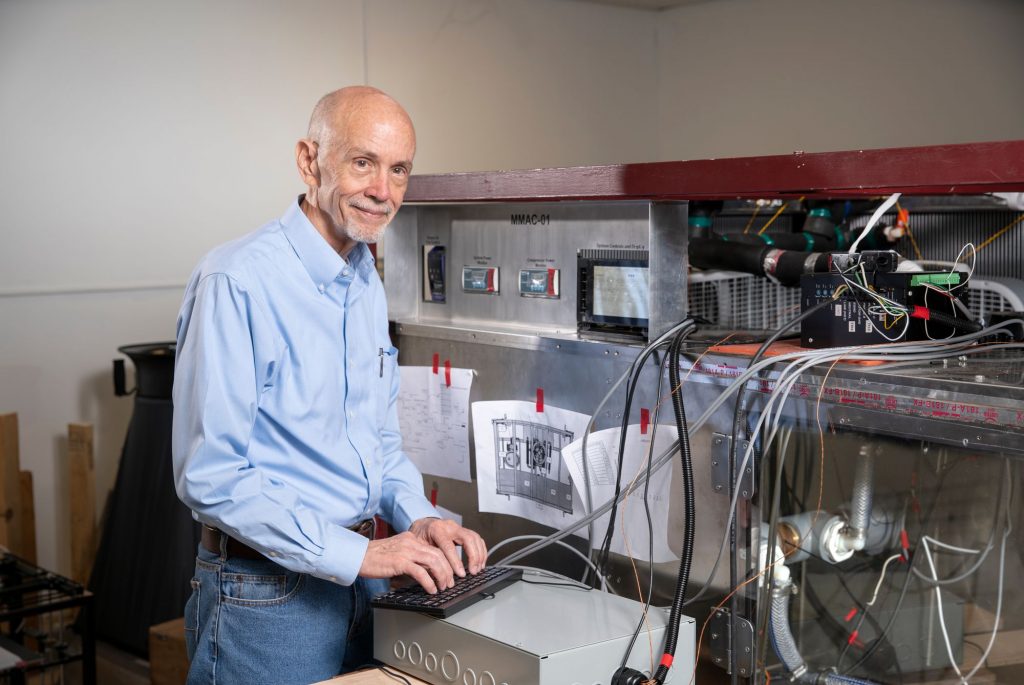Heating or cooling, PUPC technology puts focus on occupied rooms

Modern heating and air conditioning rely on raising or lowering the temperature of air, and mechanically moving it to where the comfort is needed. A typical home may have one or two thermostats which control the temperature of multiroom sections of the living area, resulting in heating or cooling rooms that may not be in use.
To address this inefficiency, architecture professor Charles Culp is developing partial use, partial conditioned (PUPC) technology, which he hopes to implement in an experimental home where he lives.
“The idea is that at any given point in the day, we may only occupy one or two rooms in our home, so why cool or heat the entire living space to the same temperature?” said Culp, holder of the Mitchell Professorship in Residential Design. PUPC technology facilitates the movement of cool or warm air around the living space, targeting specific rooms, based on occupancy. For example, at night bedroom temperatures can be set for comfort, while vacant room temperatures can fluctuate to increase efficiency. In the morning, bathrooms, kitchen and other day-use space temperatures can be adjusted for comfort as needed. The ability to move air from room-to-room provides other benefits as well.
Culp built an atrium in his concept house which will play an important role in both energy efficiency and in human health. In Culp’s PUPC house, air will cycle from the outside, be cooled or heated as needed and then moved into occupied space. Once the air warms above the desired temperature, it will be moved again into the atrium.
“I call it a jungle because we have so many plants,” said Culp. “The tropical plants in our atrium benefit from the slightly warmer air, which is pushed outside once it exceeds the desired range, and we benefit from living with plants.”
“Evidence-based research findings support the trend in healthcare to create medical campuses with healing and meditation gardens,” said Culp. One of the earliest studies, by Roger Ulrich, a former Texas A&M professor of architecture, looked at patients in a Pennsylvania hospital who were recovering from gallbladder surgery, which was at the time considered major surgery. The 1984 article, published in the journal Science, showed that patients whose windows overlooked trees healed, on average one day faster, needed less pain medication and had fewer post-surgery complications than those whose view consisted of a brick wall. “If plants have such a positive impact on patient recovery, why not apply their benefits to healthy people to keep them healthy?” said Culp.

